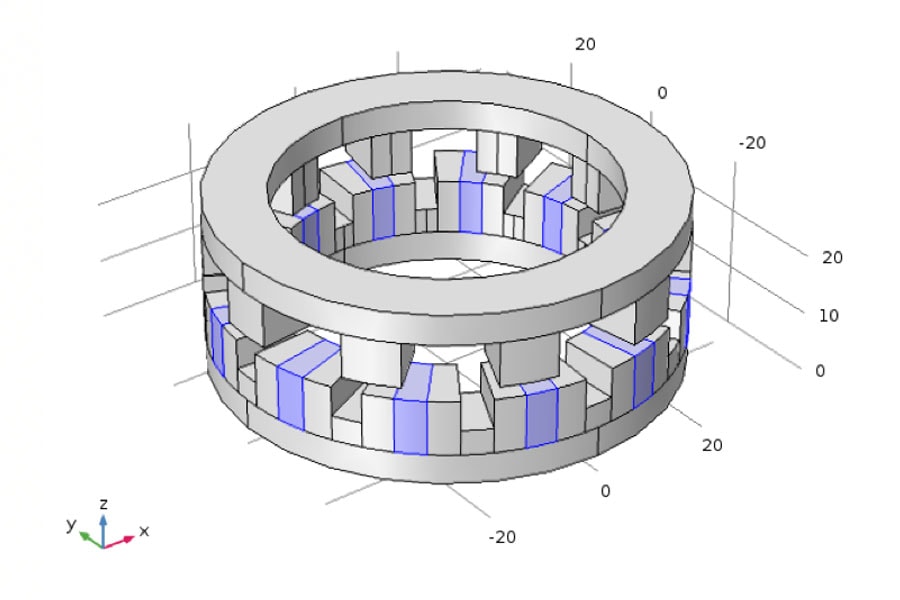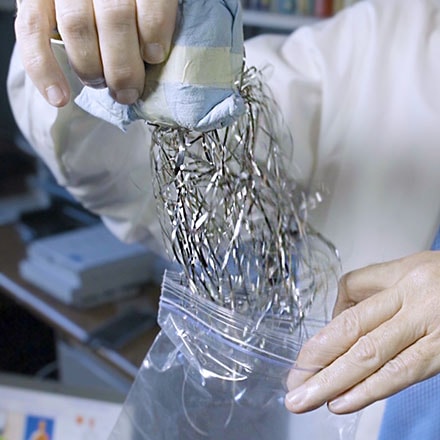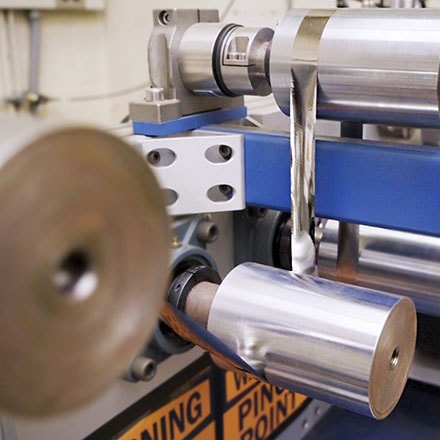
Magnetic Materials Put More Power into Small Motors
By Alexandra George
Media Inquiries- College of Engineering
Researchers in Carnegie Mellon University's Department of Materials Science and Engineering are studying soft magnetic materials to make hard changes to motors. Through synthesizing metal amorphous nanocomposite materials (MANCs), their goal is to make smaller motors that deliver comparable power.
"The power of a motor depends on its speed," MSE Professor Michael McHenry said. "When you rotate a motor at high speeds, the magnetic material switches at a higher frequency. Most magnetic steels, which is what most motors are made of, lose power at higher frequencies because they heat up."
Current motors are typically made from silicon steels. MANCs provide an alternative to silicon steels and, because of their high resistivity (how strongly they oppose an electrical current), they don't heat up as much and can therefore spin at much higher speeds.
"As a result, you can either shrink the size of the motor at a given power density or make a higher power motor at the same size," McHenry said.

Drawing of the rotor and stator in a motor. The gray portion represents where MANCs are used, and the blue represents the permanent magnets. Source: College of Engineering

McHenry's group, in collaboration with the National Energy Technology Laboratory (NETL), NASA Glenn Research Center and North Carolina State University, are designing a 2.5-kilowatt motor that weighs less than 2.5 kilograms. Most recently, they've benchmarked it at 6,000 rotations per minute and are looking to build bigger ones that will spin even faster. The design, which is funded by the Department of Energy (DOE) Advance Manufacturing Office, combines permanent magnets with the MANCs.
"Eventually we can go to higher speeds and higher powers with these designs," McHenry said. "Right now we're benchmarking a smaller motor, and then we'll try and build bigger ones. Motors have aerospace, vehicle, and even vacuum cleaner applications — motors are important in any number of applications. In aggregate, motors represent a huge use of electrical power, so they are one area where efficiencies can make a big difference."
To synthesize MANC materials, McHenry and his team rapidly solidify liquid metals at about a million degrees per second. Since they work at the lab scale, they look at 10 gram samples and screen them for their magnetic properties. Through various partnerships with partner research institutions and industry, they can take these MANCs and scale up the fabrication process for use in real-world applications.

During the power transformation process in a conventional motor, the magnetization of the motor materials switches, often resulting in power loss. But with MANCs, the losses associated with switching of the magnetization are greatly reduced because they are a glassy metal rather than a crystalline metal. The structural difference is at the atomic level: when the material is melted, then rapidly cooled, the atoms don't have time to find positions in a crystalline lattice.
McHenry's group and collaborators are some of the few demonstrating the use of MANCs in motors. Their design uses their own patented materials — a combination of iron and cobalt, and iron and nickel, mixed with glass formers. The efficient MANCs also enable the use of lower cost permanent magnets, which do not require critical rare earth materials in the motor design.
While the researchers test in smaller proportions at the lab scale, collaborations with companies in industry and other research labs can bring these metals to scale for use in industry.